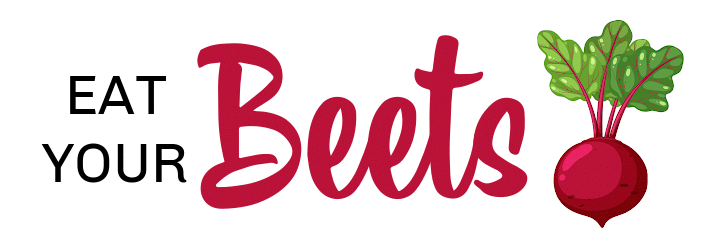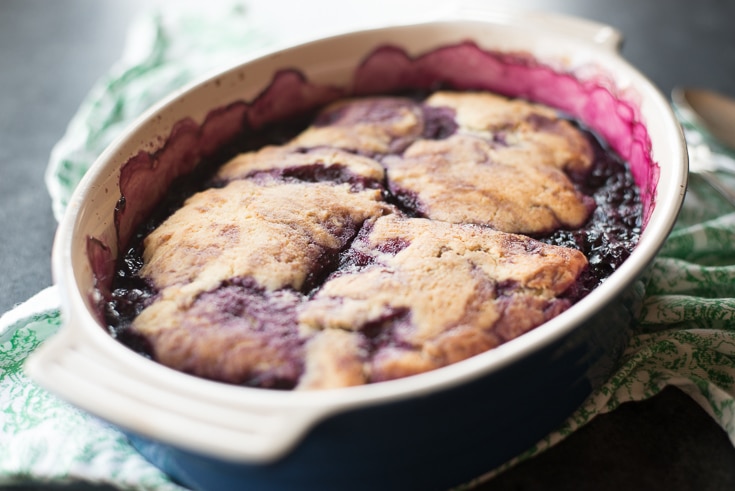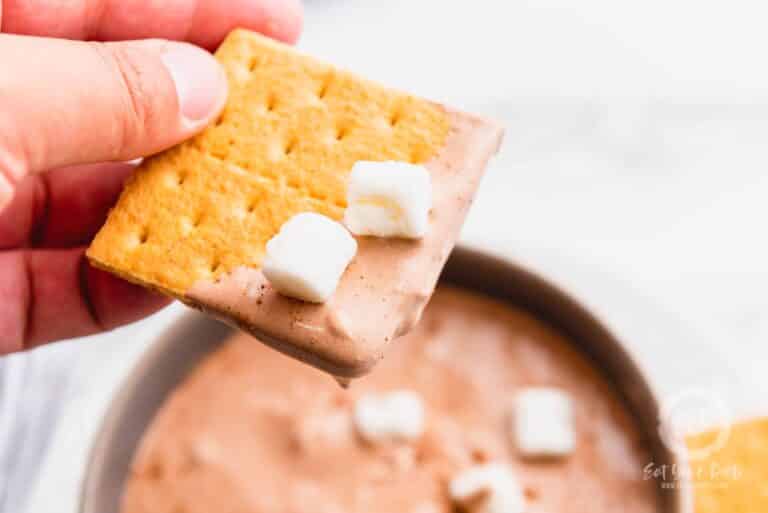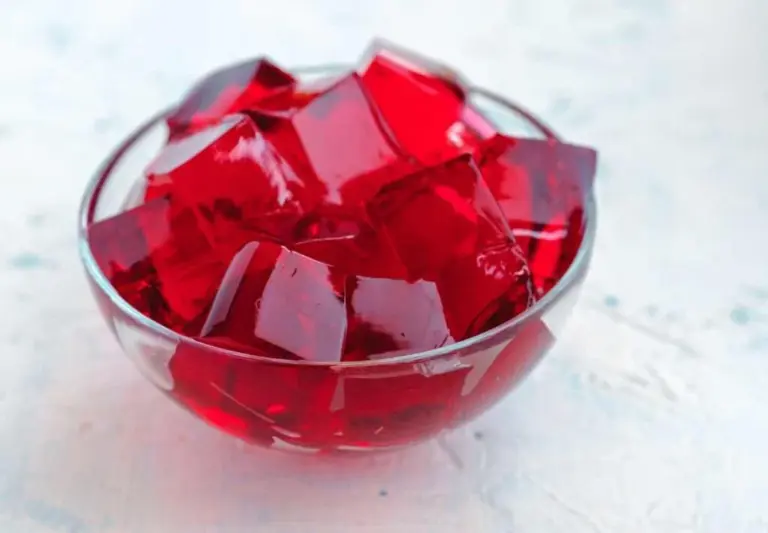How To Freeze Beets: A Step By Step Guide
Beets are an incredibly versatile and nutritious vegetable, filled with vitamins like A, C and K. And not only that—they’re almost too good to pass up in the grocery store! But if you love beets and have ever bought too many beets or just want to save some for later use, it pays to know how to freeze beets correctly.
Today we’ll show you exactly how it’s done so that when you freeze your beets, they come out perfect every time. Read on for our comprehensive step by step guide on how to freeze beets.

Contents
What Are Beets?
Belonging to the same family as spinach and chard, beets, also known as beetroot, are a root vegetable.
Beets are usually round or oblong in shape with a deep red or purple color, although there are varieties that are yellow or white.

What Do Beets Taste Like?
Beets have a sweet and earthy taste with a slightly bitter undertone. Some people describe the flavor as similar to that of dirt (in a good way!). The texture of cooked beets is tender but firm, with a slightly grainy or mealy feel. Raw beets are crunchy and slightly tough.
Overall, the taste of beets can be quite distinctive and may take some getting used to if you haven’t tried them before. However, many people enjoy their unique flavor and find it to be a delicious addition to a variety of dishes.
Health Benefits Of Beets
Beets are not just tasty but also pack a range of health benefits. They are good source of fiber, vitamins, and minerals that are important for good health. Beets are especially high in folate, which is important for healthy cell growth and development.
They are also rich in antioxidants that help to keep safe against chronic diseases such as heart disease, cancer, and inflammation. Some studies have even suggested that beets can help to lower the blood pressure, improve exercise performance, and boost brain function.
Can You Freeze Beets?
Yes, you can freeze beets. Freezing is a great way to preserve their flavor and nutrients for future use if you love beets. Frozen beets can be easily thawed and added to recipes such as smoothies, soups, stews, and salads. When freezing beets, it’s important to properly clean and prepare them first.
How To Freeze Beets?
Freezing beets is a simple and convenient way to enjoy their health benefits throughout the year. Whether you have a bumper crop from your garden or want to stock up when they’re in season, freezing beets is an easy way to enjoy them year-round.
Here is a detailed step-by-step guide on how to freeze beets:
Choose Fresh And Young Beets
When it comes to freezing beets, it’s important to choose fresh and young beets. Look for medium beets to small beets that are free of blemishes or soft spots. Large beets can be tougher and have a less sweet flavor compared to their smaller counterparts.
Fresh beets are also more nutritious than older ones, so try to use them as soon as possible after harvesting or buying them.
Beets are root vegetables that store well, but they can lose their flavor and texture over time. By choosing fresh and young beets, you’ll ensure that your frozen beets are of the highest quality and taste great in your favorite recipes.

Wash The Beets
For the best results when freezing beets, it’s essential to properly wash them before beginning the process.
Wash fresh beets by rinsing them under cold running water while gently scrubbing with a vegetable brush that removes any dirt, debris, and potential pests that might be lingering on the surface.
By thoroughly cleaning the beets, you’ll ensure that they’re ready for the freezing process and maintain their flavor and nutritional value.
So, as you embark on the journey of how to freeze beets, always remember that starting with clean, fresh beets is a crucial step towards enjoying delicious and healthy frozen beets in your future recipes.

Boil The Beets
Boiling the beets is an essential step in the process of how to freeze beets. This step helps to soften the fresh beets, making them easier to peel and prepare for freezing. To boil beets, simply place them in a large stockpot filled with water and cook until tender. When boiling the beets, ensure that they are fully submerged in the boiling water.
Keep in mind that larger beets may take longer to cook than smaller ones. Whole beets can also be boiled, but it’s essential to monitor their tenderness to avoid overcooking. Smaller beets typically cook faster, so adjust the boiling time accordingly.
Once the beets are tender, you’re one step closer to having perfectly frozen beets ready for future use in your favorite recipes.

Cool The Beets
Cooling the beets is a vital step in the process of how to freeze beets. After boiling and softening your fresh, homegrown beets, it’s important to cool them down quickly to stop the cooking process.
To do this, prepare a large pot or bowl filled with ice water or cold water. Carefully transfer the hot beets into the cold water, allowing them to cool completely.
This step not only makes it easier to handle the beets but also helps preserve their texture and flavor when freezing. By properly cooling your beets, you’re ensuring that your frozen beets will be ready for use in various recipes throughout the year.
Peel The Beets
Peeling the beets is a crucial step in learning how to freeze beets effectively. Once your blanched beets have been cooled, it’s time to remove the outer skin.
This can be done with vegetable peeler or simply by rubbing the skin off with your fingers under running water. The process of boiling and cooling the beets makes the skin easier to remove, ensuring that you’re left with just the tender, flavorful beet flesh.
Dice Or Slice The Beets
When learning how to freeze beets, it is essential to prepare them properly for the freezing process.
Start using a sharp knife and a cutting board to dice or slice the beets into desired sizes. It’s a good idea to wear gloves while handling beets to prevent staining your hands.
Cut the beets into pieces that are about an inch in size, as this will ensure they freeze evenly and are easy to use in future recipes.

Arrange The Beets On A Baking Sheet
To effectively freeze beets, arranging them on a baking sheet is a crucial step. First, place the beets on a clean kitchen towel or paper towel to drain excess water from washing or blanching.
Then, lay them out evenly on a cookie sheet, ensuring that they do not touch each other, as this will prevent them from sticking together during the freezing process.
Transfer To Freezer Bags
When freezing beets, transferring them to appropriate freezer bags is an important step in the process. Once the beets are arranged on a baking sheet and frozen individually, carefully transfer them into freezer containers or bags.
To preserve their quality, remove as much air as possible from the bags; using a vacuum sealing system can be highly effective for this purpose.
If you don’t have a vacuum sealer, you can easily freeze the beets by placing them in a freezer bag and tightly wrapping it to eliminate excess air.

Store In The Freezer
As the final step in freezing beets, it’s essential to store them properly in your freezer. Place the prepared freezer bags or containers with the beets inside the freezer, ensuring they are well-sealed and protected from potential freezer burn.
By storing them in the freezer, you can effectively preserve beets’ freshness, taste, and nutritional value for an extended period.
Can You Freeze Raw Beets?
You can freeze raw beets, including both red beets and beet greens. By freezing raw beets and their greens, you can preserve their natural taste and nutritional value, making them a convenient addition to your future meals.
Can You Freeze Cooked Or Roasted Beets?
Yes, you can freeze cooked or roasted beets as well. After cooking beets through your preferred method, such as roasting in a roasting pan or using a shallow baking dish, ensure they are cooled completely before proceeding. Freezing cooked beets can be a convenient way to preserve leftovers or to prepare dishes in advance.
Can You Freeze Beet Juice?
You can freeze beet juice as a convenient way to preserve its nutrients and flavor for future consumption. To do so:
- Extract fresh beet juice using a juicer or blender.
- Pour the beet juice into ice cube trays or freezer-safe containers, leaving space for expansion.
- Place the trays or containers in the freezer until the juice is completely frozen.
- Transfer the frozen beet juice cubes to airtight bags or containers to prevent freezer burn.
- Store the beet juice cubes in the freezer for future use.
This method allows you to easily thaw and enjoy the desired amount of beet juice whenever needed.

Boiling Vs Steaming Beets
Boiling and steaming are two popular methods for cooking beets before freezing them. Both methods can effectively cook the beets while retaining their flavor and nutritional value. However, steaming beets often results in better color preservation and less nutrient loss compared to boiling.
To boil beets, simply place them in a large stockpot filled with water and cook until tender.
On the other hand, to steam beets, use a steamer basket or insert in a pot with a small amount of water, ensuring the beets do not touch the water.
How To Thaw And Reheat Frozen Beets?
To thaw and reheat frozen beets, first place them in the refrigerator for several hours or overnight to defrost gently. Once thawed, reheat the beets in a saucepan over low heat with a bit of water, stirring occasionally until warmed through.
Alternatively, you can also reheat them in a microwave, using a microwave-safe dish and heating in short intervals, stirring in between until heated evenly.
How To Prevent Freezer Burn On Frozen Beets?
To prevent freezer burn on beets, blanch, cool, and dry them before sealing in airtight containers or freezer bags. Label the bags with dates and contents for easy tracking. Store beets in the coldest part of the freezer to maintain consistent temperature.
Following these steps ensures good taste and quality for up to 12 months, but consume within about a week after thawing for best results.
How Long Do Beets Last In The Freezer?
Notes frozen beets can last in the freezer for up to 12 months when properly blanched, cooled, and stored in airtight containers or freezer bags. This extended shelf life allows you to enjoy the beets’ flavor and nutritional benefits throughout the year.
Do Frozen Beets Lose Taste And Texture?
While freezing beets is a convenient method of preservation, it can lead to some changes in taste and texture. Upon thawing, frozen beets may become slightly softer and lose a bit of their earthy flavor.
However, if beets are properly blanched, cooled, and stored in airtight containers before freezing, these changes can be minimized.
Overall, the taste and texture alterations are generally acceptable, especially when using thawed beets as an ingredient in cooked dishes like soups, stews, or salads.
How Do You Know If Frozen Beets Have Gone Bad?
To determine if frozen beets have gone bad, first, check the storage duration using the notes on the frozen beet bags or containers. If stored for more than 12 months, their quality may have deteriorated.
Upon thawing, examine the beets for any off-odors, sliminess, or discoloration, which are indicators of spoilage. If any of these signs are present, it’s best to discard the beets and not consume them.

How To Use Frozen Beets In Recipes
Here is how to use frozen beets in recipes:
Check notes on frozen beets: Refer to the notes on your frozen beet bags for information on storage duration and ideal thawing methods.
Thaw before use: Thaw your frozen beets in the refrigerator before incorporating them into your recipes.
Incorporate in smoothies: Blend thawed beets with fruits and vegetables to create nutritious and vibrant smoothies.
Use in soups: Add thawed beets to soups or stews, providing extra flavor and nutrition.
Beet hummus: Blend thawed beets with chickpeas, tahini, and spices to create a colorful and tasty beet hummus.
Roast with olive oil: Toss thawed beets in olive oil and roast until tender, shortening the cooking time compared to fresh beets.
Prepare beet salad: Combine roasted beets with lemon juice, herbs, and seasonings for a refreshing beet salad.
Tightly wrap for grilling: Wrap thawed beets in foil and grill as a delicious side dish.
Research how-tos: Look up specific recipes and techniques to make the most of your frozen beets in various dishes.

Enjoy Beetroot Everyday
In conclusion, learning how to freeze beets properly is a valuable skill for preserving the freshness and nutritional value of this versatile vegetable. By following our step-by-step guide, you can enjoy beets all year round in various recipes, from smoothies to soups.
Moreover, freezing beets will help reduce food waste and save money by allowing you to store your harvest or take advantage of seasonal sales. Happy freezing!






